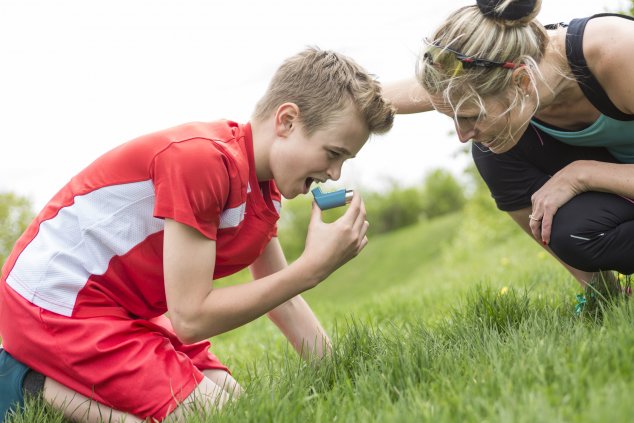
Students with Asthma
When a student with asthma joins your class, there are a number of steps you can take to ensure they're supported as much as possible.
-
Familiarise yourself with the school’s Asthma Policy.
-
Make sure parents have a copy of the school’s Asthma Plan and that the asthma register is updated.
-
Ensure that students with asthma have access to their reliever inhaler at all times, including during school trips, sports and PE. Relievers should never be locked away.
-
Tell parents when their child has an attack or needs their reliever inhaler in school and encourage older students to tell you or another staff member if they use their reliever.
-
Speak to parents about concerns over missed days, tiredness in class due to night time symptoms or lack of concentration due to asthma. Students with severe or poorly controlled asthma may require extra support due to missed school days.
-
Monitor students with asthma to ensure they don’t feel excluded or experience bullying.
-
Provide opportunities to learn about asthma in class.
-
Think about requesting resources from the Asthma Society of Ireland to ensure the school is well informed about asthma and how to manage the condition. You can take a look at our Asthma Friendly Schools Programme here.

Asthma Triggers
Asthma triggers are things that irritate the airways and make asthma symptoms worse. Each person has different triggers. If students have asthma it is important to know what their triggers are.
Triggers Commonly Found in Schools
-
Chemical fumes
-
Perfumes
-
Aerosols
-
Chalk dust
Once you know what triggers someone’s asthma, you can take practical steps to reduce their impact.
-
Damp dust chalkboard and classrooms regularly to get rid of dust mites and pollen
-
Don’t keep furry or feathery pets in the classroom.
-
Try to avoid fumes in science and art classes.
-
Rigorously enforce a non smoking policy on school grounds.
-
Make sure the school is cleaned regularly.
-
Heating and ventilation systems should be well maintained.
-
Air classrooms to avoid mould and condensation.
-
Avoid plants that give off high amounts of pollen
-
Use non-latex gloves.
-
Make sure that play areas and sports fields are free of autumn leaves as they are full of mould and fungal spores.
-
Avoid mowing sports fields or grassy areas during school hours.
-
Make sure changing rooms are well ventilated.
-
Avoid opening windows and allow students with pollen allergies to stay indoors when pollen is high, such as during and after thunderstorms.


